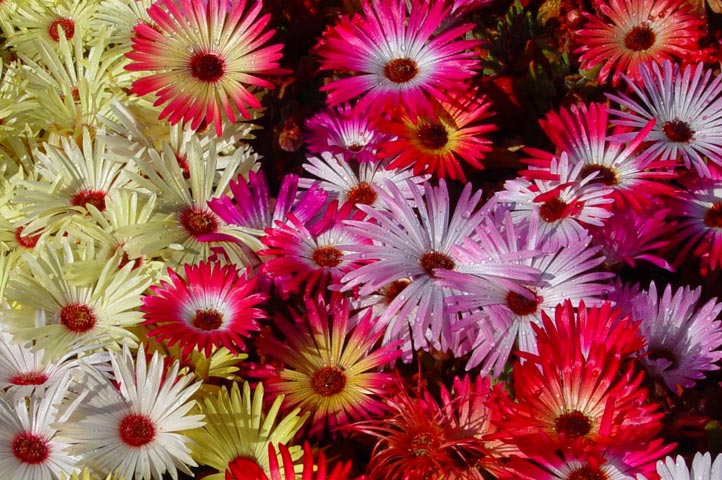
Growing and Caring for Ice Plants
Ice plants can form a bright carpet of flowers and bloom throughout the summer.
Overview and Description
Ice plants are an interesting genus of succulents, with daisy-like flowers. There is a good amount of variety among ice plants; some are low growing spreaders, others become bushy subshrubs. There are over 150 species in this genus from southern Africa. Most are easy growers that bloom freely. The botanical name, Lampranthus, is from the Greek words “lampros” (bright) and anthos (flower).
Leaves: The stocky leaves grow in pairs and can be cylindrical or almost triangular. They are short, very succulent and often blue-green.
Flowers: Daisy-like flowers with thin petals that only open in the sun. Different species bloom in vivid shades of yellow, orange, pink and red. The flowers form near the stem tips. Some varieties bloom over a long period, others only a few weeks.
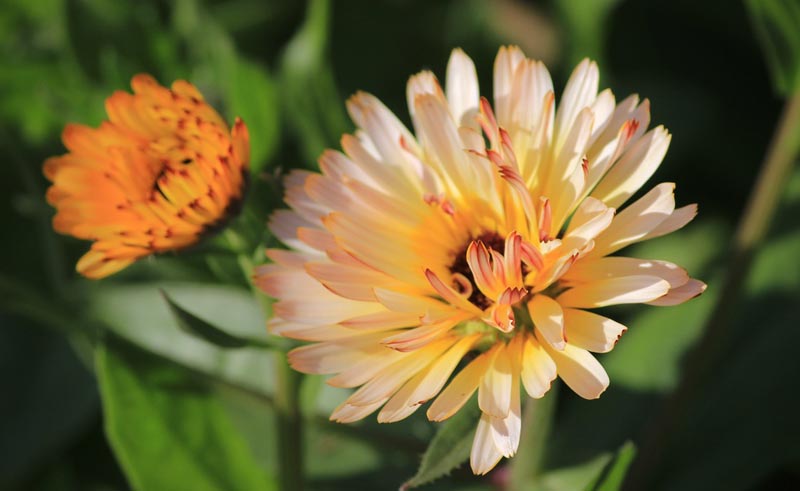
Botanical Name
Lampranthus species and hybrids
Common Name
Ice Plant. You may see individual species labeled as Ice Plants and some have quantifiers like Trailing Ice Plant. It can be confusing. If you are looking for a specific plant, you would be wise to have the botanical name.
Cold Hardiness
Hardiness will vary with the species and variety, but most are only perennial in USDA Hardiness Zones 8 – 10. Some species can tolerate a light frost, but prolonged periods of cold, damp conditions will cause them to rot. Gardeners in colder areas can grow them as annuals or houseplants.
Exposure
All varieties of ice plant grow and bloom best in full sun.
Mature Size
The size will vary among the species, but most of the commonly grown ice plant varieties remain 2 ft. (60 cm) tall or lower, with a spreading habit.
Bloom Period
Many ice plants put on their best show in spring, with sporadic repeat blooms throughout the season, however a few, like Lampranthus spectabilis, bloom all summer.
Suggested Varieties
- Lampranthus aurantiacus – Spring blooming, upright plant with bright orange petals around a yellow center. H 2 ft. (60 cm)
- Lampranthus coccineus / Redflush Ice Plant – Bright red flowers throughout the season. Somewhat frost tolerant. H 2 ft. (60 cm)
- Lampranthus haworthii – Blue-green leaves held up like a candelabra are covered in pink or purple flowers in the spring. Repeat blooms sporadically. H 2 ft. (60 cm)
- Lampranthus spectabilis /Trailing Ice Plant- Long blooming in white or purple-pink. Low growing and spreading. H 2 ft. (60 cm)
Design Suggestions:
Where the plants are hardy, they make a nice ground cover. Ice plants thrive in poor soil and make a wonderful alpine or rock garden plant or tucked in a stone wall. Their spreading habit means they quickly fill a container and spill over, so they are equally nice in hanging baskets and free standing containers.
Growing Tips
Soil: A neutral soil pH is fine, but it is more important to provide sandy, well-draining soil. Plants will rot if left in wet or damp soil for prolonged periods of time.
Planting: Ice Plants can be grown from either seed or cuttings. Seeds need warm temperatures (55 F.) to germinate. Taking cuttings is the fastest method. Cut while the plant is actively growing, from spring to early fall.
Cut shoots about 3 – 6 in. long and remove all but the top set of leaves.
Succulent cuttings should be allowed to dry slightly and callus. Leave them out in the air for several hours or overnight. Then root in sandy soil, in containers. Keep the soil evenly moist, until the cutting root. You can tell they have rooted by gently tugging on them. If they offer resistance, they have rooted and can be potted up.
Maintenance
Established plants are extremely drought tolerant, however they do prefer regular weekly watering during the summer. Allow the soil to dry out between waterings in the winter, when they are somewhat dormant.
Flowering is more abundant if container grown plants are fed a balanced fertilizer, according to label directions. In ground plants should be fed if the soil is poor or if blooming is sparse.
Plants can be divided or repotted in early spring.

Pests & Problems
Weather is the biggest problem when growing Ice Plants. Few diseases have been reported, but mealy bug and scale can occasionally infest.



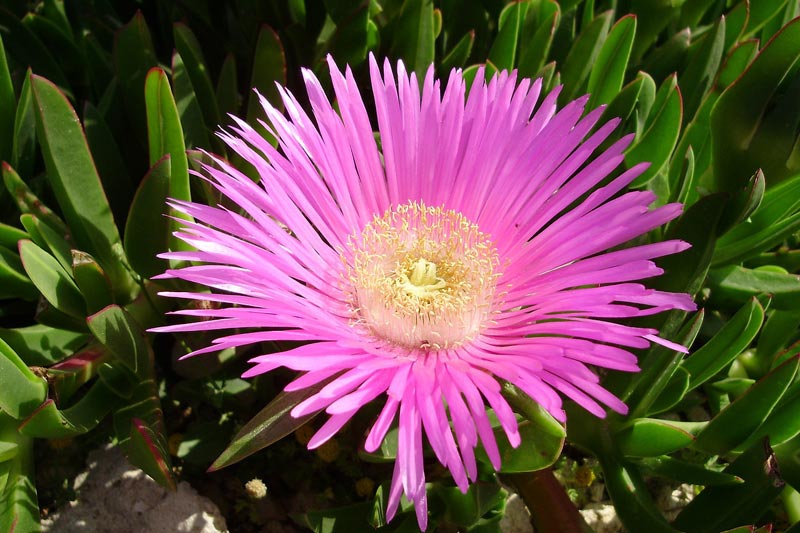
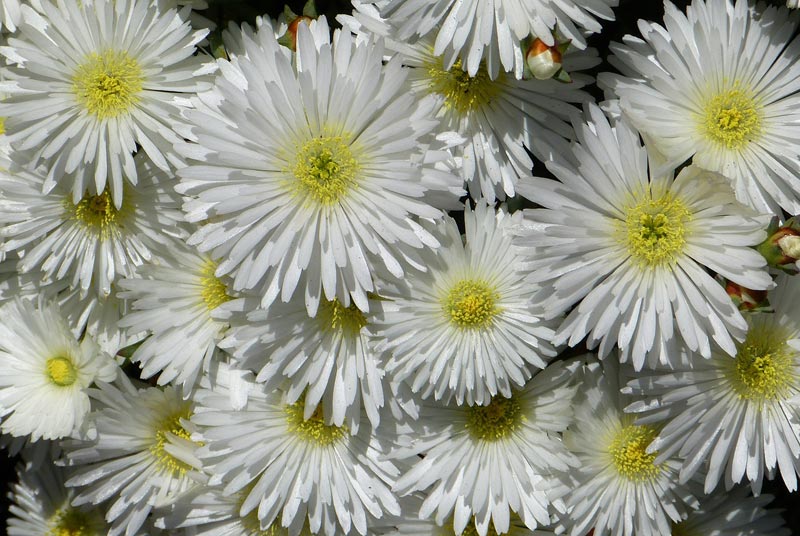
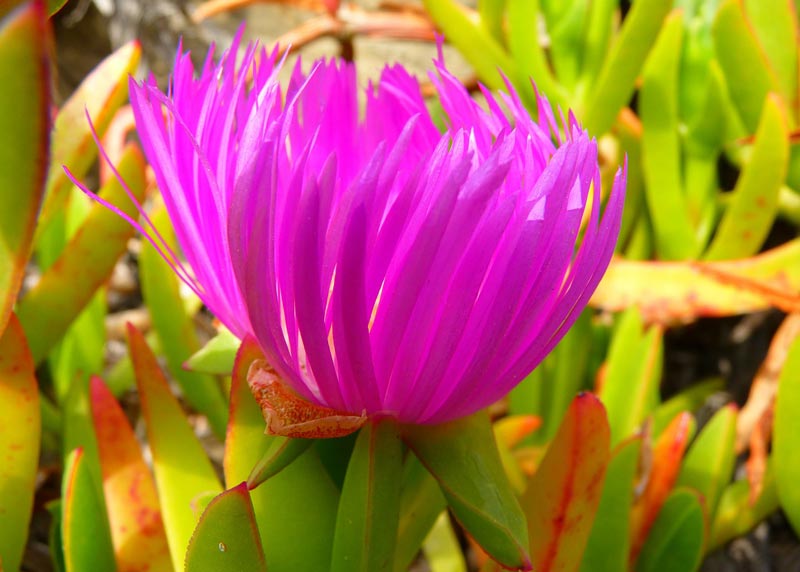
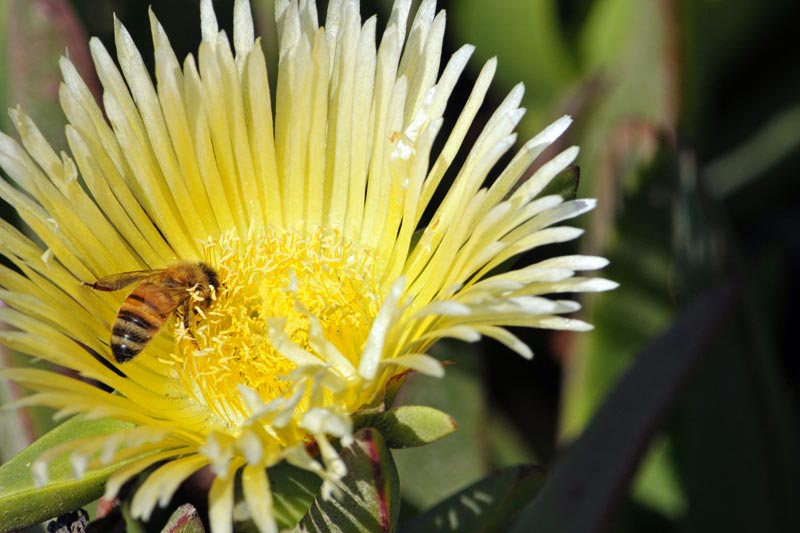

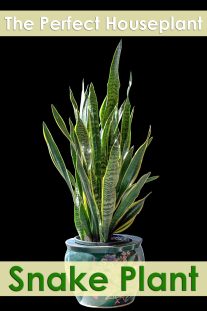

Leave a Reply